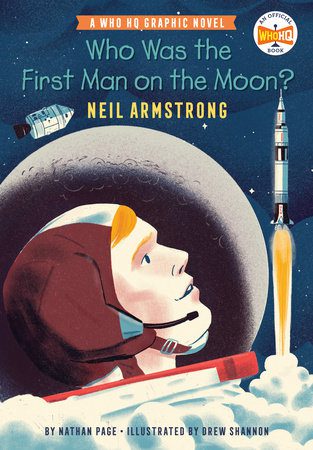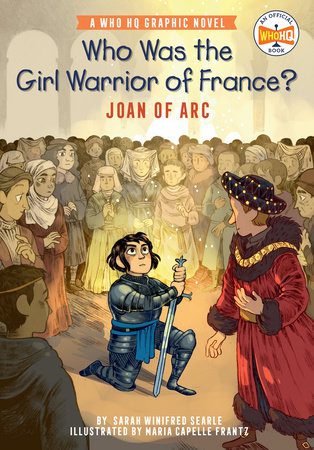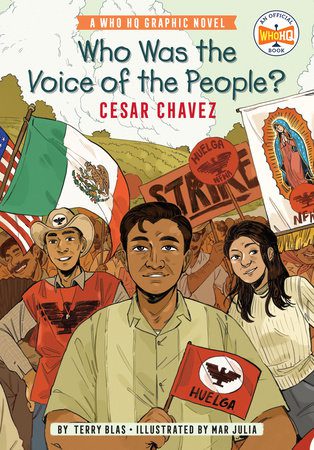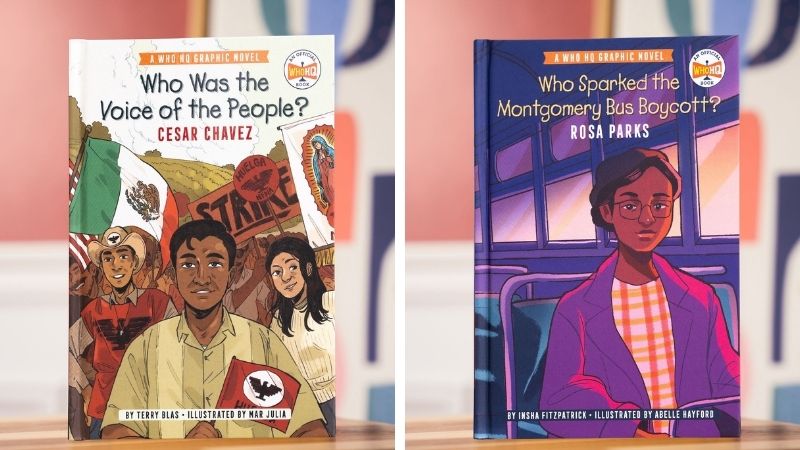The Who Was? illustrated biographies are staples in classrooms from upper elementary through middle school. If you’re a huge fan like me, you’ll be excited to know that Penguin Random House is releasing graphic novel versions of the popular series in January! The Who HQ graphic novels introduce key historical figures like Rosa Parks and Neil Armstrong through stories of moments that changed history, including the Montgomery Bus Boycott and the first moon landing. Recommended for ages 8-12 (grades 3-7), each graphic novel has a different illustrator with a unique illustration style. I had the privilege of previewing these highly anticipated texts to bring you tips for using them in your classroom:
Who Sparked the Montgomery Bus Boycott?: Rosa Parks by Insha Fitzpatrick, illustrated by Abelle Hayford

In the opening frame, Rosa is in jail, having just been arrested for violating the Segregated Bus Law. The proceeding pages introduce us to Rosa’s mother, husband, and lawyer (and eventually Martin Luther King, Jr.) as they decide how to move forward. This graphic novel focuses on the bigger picture, not just Rosa refusing to give up her seat but the boycott that followed. Readers gain insight into the difficult decisions they faced. The emotions come to life in the characters’ faces and body language. The many distinct perspectives presented provide excellent jumping-off points for classroom discussions surrounding the times. Consider using this graphic novel to teach perspective (point of view), connotation, dialogue, theme, and mood. Preview Who Sparked the Montgomery Boycott?: Rosa Parks here.
Who Was the First Man on the Moon?: Neil Armstrong by Nathan Page, illustrated by Drew Shannon

The first four pages alone provide ample learning opportunities. Comparing two different years, when Armstrong was a boy (late 1930s) and the day he launched into space (July 1969), catches the reader’s attention and foreshadows his future as an astronaut. With the movement between different timelines throughout, motivation, foreshadowing and flashbacks are just some of the literary elements that could be taught using this graphic novel. Preview Who Was the First Man on the Moon?: Neil Armstrong here.
Who Was the Girl Warrior of France?: Joan of Arc by Sarah Winifred Searle, illustrated by Maria Capelle Frantz

The way Joan of Arc is presented as not just a warrior but also a teenager makes this graphic novel relatable for students and young people. The 15th-century dialect and vocabulary may be challenging but allows for analysis and conversation surrounding the setting of this graphic novel. The illustrations in the first half are full-color (while she is presenting herself as a girl) and then they switch to black-and-white (when she presents herself as a boy). This graphic novel would be great for a deep character study as well as for touching on conflict, tone, and onomatopoeia. Preview Who Was the Girl Warrior of France?: Joan of Arc here.
Who Was the Voice of the People?: Cesar Chavez by Terry Blas, illustrated by Mar Julia

In this graphic novel, there’s a beautiful blend of cultures as well as languages (English and Spanish) as readers are invited to march alongside Cesar Chavez. Humor is laced throughout the narrative as well. Consider posting a few of the illustrations for students to notice and wonder about before asking them to guess (or infer) what they will be reading about. This graphic novel provides many opportunities for culturally responsive teaching through the understanding of history and culture as well as language. Preview Who Was the Voice of the People?: Cesar Chavez here.
Why you’ll love the whole series
All students can benefit from exposure to graphic novels.
They may especially appeal to:
- Reluctant Readers: because learners who are hesitant to pick up a traditional book may find a graphic novel less overwhelming.
- Language Learners: because graphic novels are rich in vocabulary and visually appealing. Language learners can use picture clues to create meaning and enhance comprehension.
- Accelerated Learners: because graphic novels provide a multitude of opportunities to extend learning through critical thinking and creativity.
Graphic novels help with complex or sensitive topics.
Themes like racism and human rights can be challenging, but graphic novels’ format and visual nature can make heavy topics feel more relatable and less intimidating. They bring the stories and experiences of key historical figures to life through bold, eye-catching illustrations, dialogue, and narration. Each of the new Who HQ novels begins with an introduction that builds context and sets the scene. The back matter includes a timeline that provides a concise biographical overview of the central figure’s life.
Graphic novels are valuable learning tools.
There is an abundance of ways students benefit from graphic novels; they model a wide range of literary elements, are powerful motivators and differentiation tools. The Who HQ graphic novels make complex times in history more accessible to all learners while building students’ visual literacy skills.
Check out all the books in the Who Was? graphic novel series here.
Plus, check out this free activity pack with fun printables tied to the books.

